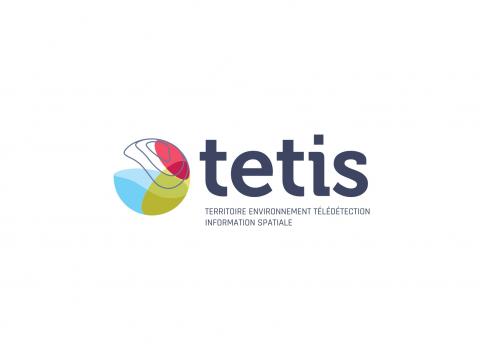TETIS (Land, Environment, Remote Sensing and Spatial Information)
February 11 2022UMR (Joint Research Unit) AgroParisTech, Cirad, CNRS, INRAE
General scientific background

The TETIS JRU contributes to the production of knowledge, tools and methods to improve our understanding of the structure, function, dynamics and interactions of human-environmental systems. The JRU implements an integrated approach to the spatial information chain, from its acquisition to its processing, and from its management to its use by stakeholders. Finalized research is directed towards supporting stakeholders in the management of territories and resources. As a multidisciplinary research unit, the objective of the unit is to provide relevant and effective information for decision-making in line with the general objective of promoting the rational management of land, coastal zones, natural, forest and agricultural resources.
On the basis of this research, the unit devotes a significant part of its activities to academic teaching (Master of Geomatics, PhD), professional training (Master of advanced studies ® SILAT, CEA, short courses, including in the South), expertise and support for public policies.
Fields of research
The unit consists of four research teams :
- Advance the development and application of geospatial information technology (remote sensing, geographic information systems, global positioning systems, modeling through computer simulations), to tackle problems at various spatial scales, from local to global
- Study the integration of knowledge from ecology, agroenvironmental systems and territories into the application of techniques and methods for detecting, identifying, characterizing and monitoring areas and structural objects at various scales
- Contribute to the specifications of new acquisition systems based on aerospatial data
- Develop methods for signal and image processing for various environmental applications
- Valorize and develop explanatory and/or predictive modeling methods and tools
- Study the spatial organization of systems, the uncertainty of data and modeling results, the construction of spatialized indicators and the development of a tool for simulating landscape dynamics
- Conduct computer research on the management of spatialized and complex environmental data, with the objective of addressing issues related to the management and mining of large volumes and flows of data, the structuring of information and its exploitation.
- Develop concepts, methods and tools for the use of spatial information in decision-making and collective action processes, particularly territorial ones.
- Contribute to understanding the interaction between environment and society, the organization of governance mechanisms and the place of information in these mechanisms

